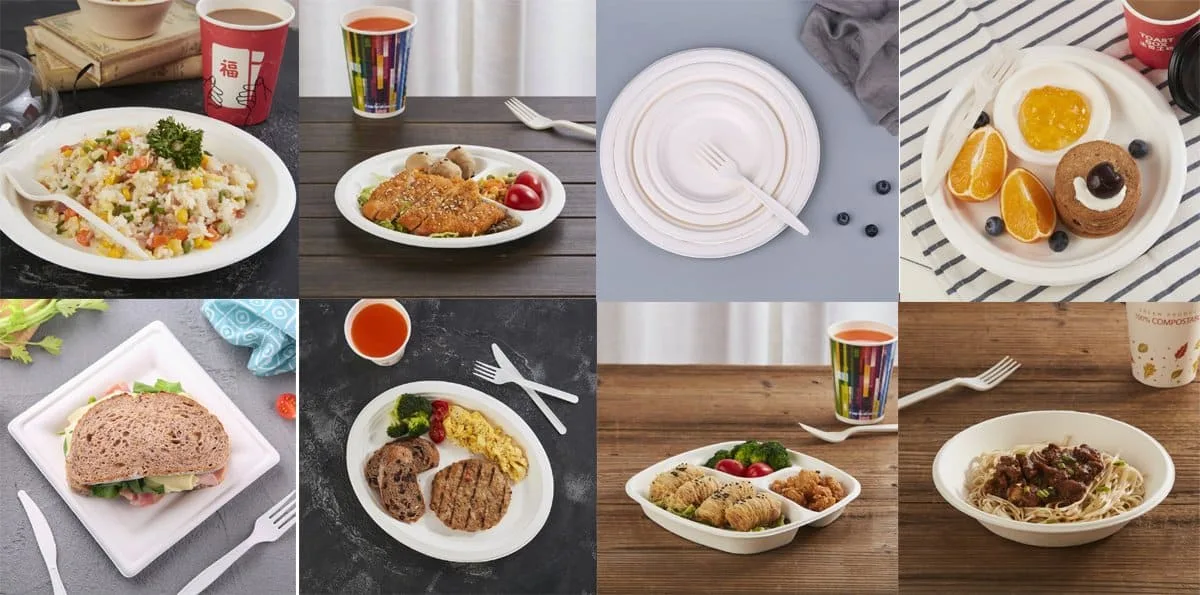From Plate Size to Soil: A Full Guide to Paper Plates
Discover the truth about paper plates: sizes, microwave & oven safety, BPA vs PFAS, and how long paper takes to decompose. A full expert guide.

Introduction
Paper plates do far more than hold your food—they influence customer experience, operational safety, and even the planet’s health. Whether you’re in foodservice, hospitality, or sustainable packaging, it’s critical to understand not just the paper plate sizes, but also their performance in microwaves, ovens, and the environment.
This professional guide breaks down key questions and considerations including:
-
What is the standard paper plate size?
-
Can paper plates go in the microwave or oven?
-
What’s the difference between BPA vs PFAS?
-
And finally: How long does paper take to decompose?
Let’s decode it all—backed by science and business insight.
1. Know Your Plate: Understanding Paper Plate Sizes
In disposable packaging, plate sizes and names are foundational to portion planning, pricing strategies, and packaging efficiency.
The Most Common Paper Plate Sizes
-
6-inch: Desserts and appetizers
-
7-inch: Snacks and children’s meals
-
8-inch: Salads and sides
-
9-inch: The standard size paper plate in most industries
-
10–12-inch: Large entrées or platters
When manufacturers refer to standard paper plate size, they usually mean 9 inches. However, disposable plates sizes can vary slightly based on coating, rim design, and raw materials.
Best Practices
-
Use smaller paper plate sizes for waste reduction at quick-serve counters
-
Choose larger sizes for buffet-style or multi-component meals
-
Align sizing with your branding and product portioning strategy

2. Heating Up: Microwave Safety of Paper Plates
A frequent concern from customers is:
Can paper plates go in the microwave?
Variations include:
-
Can you put paper plates in the microwave?
-
Paper plate in microwave
The Safe Use Rule
Most uncoated or lightly coated paper plates are microwave safe—for short durations. However:
-
Avoid plates with metallic inks or heavy plastic coatings
-
Limit reheating to under 2 minutes
-
Watch for sogginess in high-moisture foods
To avoid confusion, always request “microwave safe” certifications from your supplier.
3. Oven Safety: Can You Put Paper Plates in the Oven?
Many also ask:
Can I put a paper plate in the oven?
Is a paper plate oven safe?
The short answer? No.
Here's Why:
-
Paper combustion occurs at around 451°F
-
Oven temperatures regularly exceed safe limits
-
Even minor exposure may release toxic fumes from coatings
Use oven-compatible fiber trays or aluminum alternatives for baking or reheating.
4. Breaking Down BPA vs PFAS
Eco-conscious buyers want to know what chemicals are in their disposables. That’s why searches like BPA vs PFAS, PFAS vs BPA, and PFOA-free vs PFAS-free are trending.
What’s the Difference?
-
BPA: Linked to hormone disruption, found in hard plastics
-
PFAS: Fluorinated chemicals that resist oil and water
-
PFOA: One type of PFAS, often regulated or banned
To clarify: BPA is not a PFAS. But both are substances of concern, especially when used in food-contact products.
What to Do
-
Choose BPA-free, PFOA-free, and PFAS-free products
-
Confirm with lab reports or certifications (e.g., FDA, EU, BPI)
-
Prefer plant-based coatings when available
Switching to chemical-free disposable plates helps protect both your brand and your customers.
5. Can Paper Plates Handle Hot Food?
If you're serving soup, curry, or hot entrees, not just any plate will do. You need strong disposable plates for hot food.
What to Look For:
-
Heat resistance up to 200°F
-
Rigid construction (e.g., molded fiber, bagasse)
-
No leakage or grease stains
Disposable plates for hot food must be tested for load-bearing and thermal integrity. Insist on technical data from suppliers—especially if you're distributing at scale.
6. Environmental Impact: Do Paper Plates Really Decompose?
Sustainability starts with asking:
-
Does paper decompose in soil?
-
How long does paper take to decompose?
-
What’s paper decomposition time?
-
How long does cardboard take to decompose?
Key Facts:
-
Uncoated paper plates: 45–60 days in compost conditions
-
Coated paper plates: 90+ days
-
Cardboard: Around 2–3 months
Always check for compostability certification (e.g., ASTM D6400, EN13432). For green claims to hold up in court—or in marketing—they must be verifiable.
Conclusion
Choosing the right paper plate size, ensuring microwave and oven safety, avoiding harmful chemicals like BPA or PFAS, and understanding paper decomposition time are all essential for modern foodservice operations.
This is more than product knowledge—it’s your edge in an increasingly eco-aware and performance-driven marketplace. By making better choices in disposable packaging, you reduce risk, improve sustainability, and enhance customer experience.
What's Your Reaction?














.jpg)
.jpg)


